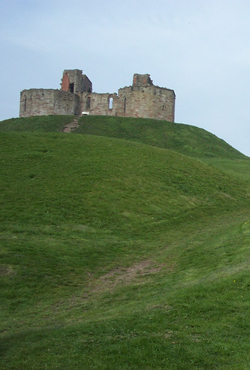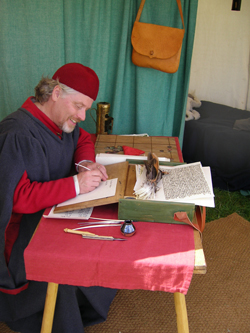For an amateur historian the responses to my list and analysis of the licences to crenellate of England and Wales (Davis, 2006) was most gratifying and has inspired me to further work in this field. Rising to the challenges put in Colin Platt’s ‘Understanding Licences to Crenellate’ (2007a), I have tried to explored the biographical details of as many of the grantees of LCs as possible.
Firstly, however, please note that my previous article grossly over stated the number of ‘fortified’ manor houses granted licences to crenellate as 39% (2006, p. 229). This is because I record all houses granted a LC as ‘fortified’ but other domestic houses are recorded as ‘fortified’ only if an authority has described them as such. There is no absolute definition of ‘fortified’ or ‘defensive’ and these are subjective labels used by different authors for different purposes that can cause contention. A good number of the surviving moats of licensed houses are of a type only rarely described as ‘fortified’. I have not, comprehensively, collected the data on moated houses. Differentiating between gentry status moated ‘manor’ houses and yeoman status ‘homestead’ moats also requires considerable research and analysis. However, based on examination of some online county historic environment records, I estimate that only between 5-10% of gentry status moated houses were built, or rebuilt, in association with a LC0a. The evidence that all forms of fortified building were mainly constructed without LCs is clear and should stop any remaining suggestion that LCs were a requirement to build any fortified structure, particularly castles.
From the start of scholarly analysis of LCs it has been clear that they were mainly concerned with domestic houses - J H Parker’s 1856 list and analysis of Thomas Duffas Hardy (Turner and Parker, 1859) work on the Rolls was mainly concerned with how the licensed site was described and he showed the commonest description was as ‘manor house’ (mansum) and only very rarely was the term ‘castle’ used. However, the erroneous idea that LCs were a requirement to build castles has taken a strong hold and has caused trouble since. The licence to crenellate ‘Beudesert’ granted to Walter Langton, Bishop of Lichfield in 1306 has been attributed to Beaudesert Castle at Henley in Arden, by D J Cathcart King (Castellarium Anglicanum, Vol. 2 p. 481) and in the Time Team TV programme, although this was never a holding of the bishop, apparently only because a LC ‘had to be for a castle’. The probably actual site was in the bishops chase at Cannock. This may either have been a domestic building on the site of the 15th century, now ruined, Beaudesert Hall or a building within the, nearby, Iron Age hill fort Castle Ring, were medieval foundations can still be seen. The effect this misattribution has had on the interpretation of Beaudesert Castle is unassessed.
John Rickard PhD thesis, published as The Castle Community in 2002, states that the “licence to crenellate is one of the most important sources sources for both castle building and castle ownership”. (p. 26) This assumption that LC’s are to do with castles seems to lead Rickard to state “many did not result in any building work of any nature.”(p. 26) In reality LCs were granted for a diverse range of buildings, from massive castles like Dunstanburgh to modest ‘pele’ towers but most were granted to moated manor houses with thin walls, which were easily demolished and replaced by more fashionable houses over the years. If one accepts the wording of the licences and looks for evidence of a mansum rather than a castle almost all licences do seem to have resulted in some work (except in the few cases of a licence granted for multiple holdings of an individual where work was confined to just one or two sites), although because most sites have not been fully or even partly investigated, apparent archaeological evidence is often slight or absent. Rickard’s comments on ‘used’ and ‘unused’ licences varying across the country, with highest numbers of ‘used’ licences being in the northern border regions and lowest numbers in the south east is explained by the likelihood of surviving remains based on the locally available building materials.1 Northern stone tower houses compared to flint rubble moated houses of the southern chalk belt. Clearly the increased levels of criminal and military activity in the north, as well as the different building materials, affected the choice of architectural style of elite buildings but this has nothing to do with the application for or granting of LCs. Absence of evidence is not evidence of absence.
The 19th Century Whig historical agenda still effects some historians. Carole Rawcliffe’s Oxford Dictionary of National Biography entry for Ralph Stafford (1301-1372) has the statement that “His forebears had hitherto been prevented by the Crown from building a castle in Stafford, and he had anticipated this singular mark of confidence [a licence to crenellate of 1348 (CPR 1348-50 p. 13)] by entering a contract with a local mason a few weeks earlier.” Recent excavations suggest there was a strong masonry tower on the motte at Stafford before the tower house built by Ralph. (Soden, 2007, pp. 196-98.)




